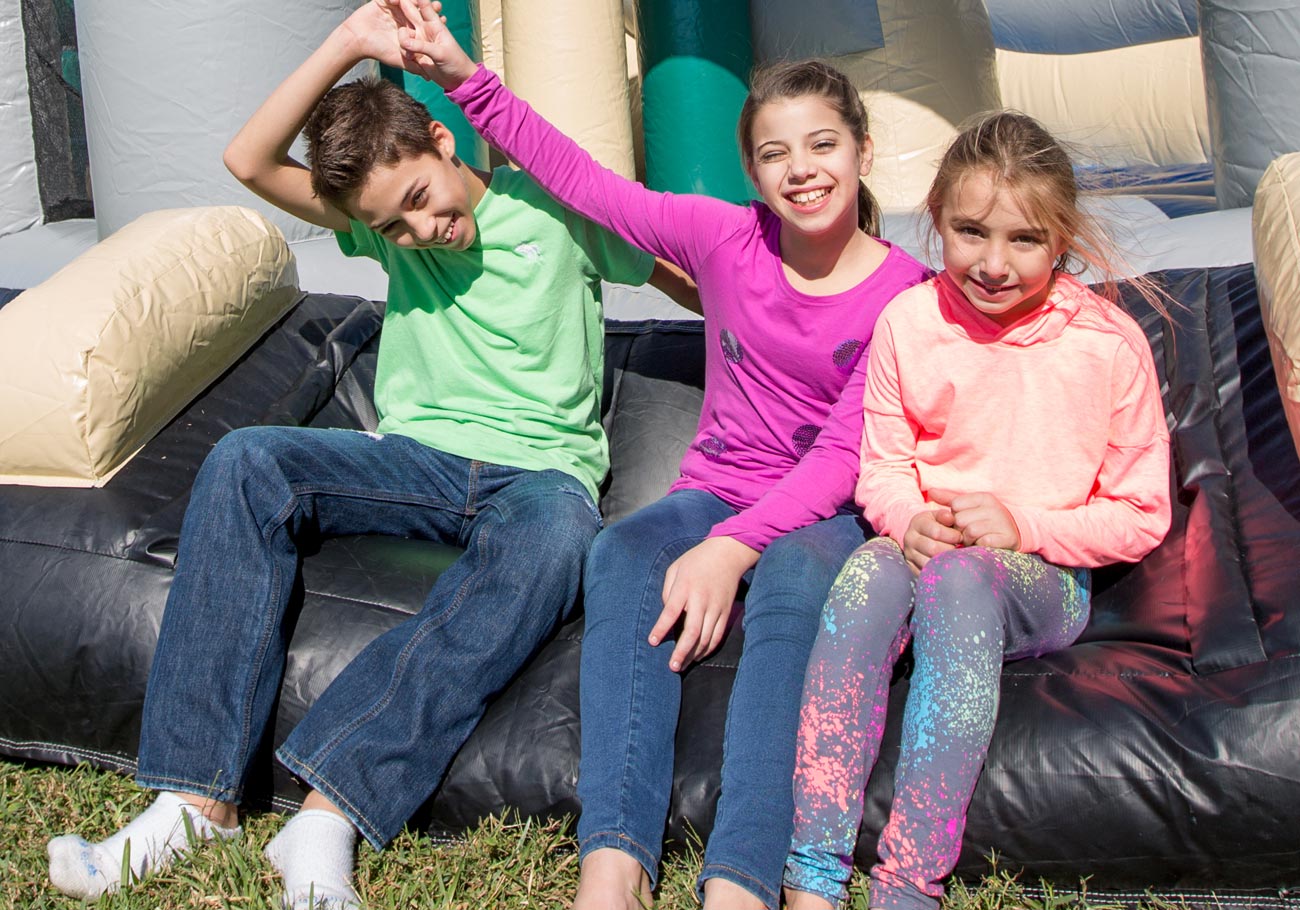As part of our ongoing commitment to safety, we are exploring deeper into the general rules of using Bounce Houses and Inflatable Water Parks safely. During this series we explore the “how’s” and “why’s” of the various aspects of safe inflatable use, such as anchoring, evenly matching players, sliding independently and more. First up…
Evenly Matching Players

Mom wants to go in the Bounce House with the son. Brother wants to bring his sister. Your Nephew wants to bring your dog in. You get the idea… While each of these scenarios may sound fun, it is important that players in a Bounce House or other Inflatable Play Structure are evenly matched in size, age, development, and skillset.
Bounce Houses are inherently safe products, when used properly – they are giant bags of air (insert your own husband joke). Your lawn is a harder surface than your Bounce House, but the lawn doesn’t encourage kids to wrestle and jump directly on top of each other quite as much as the Bounce House may.
Consider the following physical development milestones for kids (we’ll use boys)
- 1 Year (22Lbs): Crawl and walk with assistance.
- 2 Years (28Lbs): Walk and Dance
- 3 Years (34Lbs): Run forward and Jump in place
- 4 Years (39Lbs): Run in circles, Ride a tricycle.
- 5 Years (45Lbs): Jump on one foot, do somersaults.
So within one family or one playgroup, you can easily have kids who are capable of doing somersaults, and kids who can barely walk. That Bounce House can have Kids in with weight differences of 40Lbs or more within the common age-rage of 3-10, some doing somersaults, and some struggling to stay upright. Inside an enclosed bouncing environment, you potentially could have a much larger child jumping and possibly landing on a much smaller child who is unable to stand unassisted in that type of environment.
Don’t fret yet.
There are plenty of ways to keep kids safe in the Bounce House, simply by matching them properly and making sure they are playing nicely.

While following the minimum age requirements of 3-Years definitely helps, it is still critical to monitor behavior, and keep kids playing with appropriately matched players. Some Inflatable Combos, like the Blast Zone Sidekick Castle, may have an isolated ball pit area for younger kids, with a Bounce House area for larger, more advanced kids. However, in many instances, it is simply up to the parents/adults to monitor play and keep kids appropriately isolated to avoid contact injury.
A local church has tried a couple approaches with their Blast Zone Bounce House. The first was to find age-appropriate activities for different age groups at an event. In this case, the smaller kids had other activities available. This worked OK, but it is natural for the smaller kids to want to play with the bigger kids, so this is not the ideal situation.
Second, during class-based activities, kids were separated into different groups based on age, which allowed kids to play with other more evenly matched players. This was ideal, as the matching was more official and done automatically.
In family scenarios, it really comes down to common sense parenting:
- Evenly Match Sizes
- Evenly Match Skillets
- Try to keep mismatched players physically separated
- When Possible, look at Bounce Houses with separate areas for different activities
- Don’t let bigger kids roughhouse with smaller kids
- Don’t let people slide together as a unit
- If you are bouncing with your kids, be very careful not to fall on top of them.
Blow up the Bounce House, Keep kids evenly matched, monitor play habits, and HAVE FUN!
